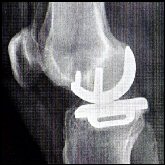by Scott M. Anderson
Angel investing is influenced by many factors affecting the startup including: technology, unmet demand, scalability and, most important, the founding team. These and many other factors will have a critical impact on the success or failure of the investment. However, there is one common factor to them all: Cash.  An investor and founder are in the elevator together. The investor says “Nice idea, how much capital do you need?” The founder says “$750K”. Investor says “Why $750K?” Founder says “We believe it’s the right amount based on other startups I’ve heard about.” Or she might say “It seems like the right amount based on the size of other angel investments.” Or she might say “It just seems like the right amount.”
An investor and founder are in the elevator together. The investor says “Nice idea, how much capital do you need?” The founder says “$750K”. Investor says “Why $750K?” Founder says “We believe it’s the right amount based on other startups I’ve heard about.” Or she might say “It seems like the right amount based on the size of other angel investments.” Or she might say “It just seems like the right amount.”
Those responses are all wrong!!
A more appropriate response would be: “We’ll need $450K to fund losses the first two years, $250K to buy tooling and another $50K for inventory and other working capital needs.” After hearing this better response, the investor thinks: “As with most founders, I’m certain her numbers are worthless. However, this founder seems to have specific numbers which suggests she’s analyzed them and may be a good overseer of my invested money. I’m interested in her assumptions. I’d like to meet with her again.”
At a minimum, any founder must have a high level understanding of how much capital is needed and the reasons why. She must be prepared to communicate these reasons as part of her elevator speech. Similarly, each investor should ask for and expect an immediate response from the founder, which reflects her understanding of why the investment is needed.
How does the founder determine what she needs? And how does the investor determine if the investment amount is right? A cash projection will meet the needs of both parties. An analysis of the startup’s cash inflows and outflows will confirm the company’s investment needs. At a high level, the cash projection is easily calculated as net profits + capital expenditures + required working capital (such as inventory stocking required to achieve sales). More complex business models would require a more in‐depth treatment.
The investor met with the founder again and received the following projected Income Statement (in $000s).  Let’s examine these numbers to see if they confirm the founder’s response in the elevator:
Let’s examine these numbers to see if they confirm the founder’s response in the elevator:
- First 2 years of losses of $450K. The loss in year 1 is $242K and the loss in year 2 is $208K. These sum to total losses of $450K. RESPONSE IS CONFIRMED.
- Tooling cost of $250K. The Capital Expenditures (CAPX) in year 1 is $250K and $0 thereafter. RESPONSE IS CONFIRMED.
- Working Capital needs of $50K. The working capital is required to be $20K and $30K for years 1 & 2, respectively, totaling $50K. RESPONSE IS CONFIRMED.
The founder has provided numbers at the meeting which agree with those she cited. That’s good. The founder would lose all credibility if they did not support her elevator speech. But, has the startup asked for enough at $750K? Let’s examine a projection of the cash in the startup’s bank account. With an investment of $750K in year 1, the following is a projection of the startup’s cash in the bank:  The cash bank balance is projected not to be negative at the end of any year over the projection period and the total financing received exceeds the total cash out, so an investment of $750K would be adequate based on the earnings performance projected by the Income Statement. However, the large cash balance of $238K at the end of year 1 suggests that the timing needs of the startup may not match the investment. In fact, the investor would rather invest the excess cash of $238K in year 1 for a different investment which would pay off within 12 months. Such an alternative investment would enable the investor to realize a financial return on the excess cash while still fulfilling his total commitment of $750K to the startup. Following this thinking, if the investment were made in two installments versus one, the following projected cash balance results:
The cash bank balance is projected not to be negative at the end of any year over the projection period and the total financing received exceeds the total cash out, so an investment of $750K would be adequate based on the earnings performance projected by the Income Statement. However, the large cash balance of $238K at the end of year 1 suggests that the timing needs of the startup may not match the investment. In fact, the investor would rather invest the excess cash of $238K in year 1 for a different investment which would pay off within 12 months. Such an alternative investment would enable the investor to realize a financial return on the excess cash while still fulfilling his total commitment of $750K to the startup. Following this thinking, if the investment were made in two installments versus one, the following projected cash balance results:  A two installment investment better matches the startup’s need since no excess cash exists at any time during the financing period. The investor would suggest to the founder that the $750K investment should be made in two installments: $512K in year 1 and $238K in year 2. An investor’s diligence process should be stepwise: a layer of information is requested, and provided by the company. Additional information is requested and provided, until the investor is completely clear about the startup’s execution strategy.
A two installment investment better matches the startup’s need since no excess cash exists at any time during the financing period. The investor would suggest to the founder that the $750K investment should be made in two installments: $512K in year 1 and $238K in year 2. An investor’s diligence process should be stepwise: a layer of information is requested, and provided by the company. Additional information is requested and provided, until the investor is completely clear about the startup’s execution strategy.
From the founder’s perspective during the diligence process, it’s critical that each diligence level be consistent with all prior levels. In our example, the founder responded in the elevator with a high level description of why she needed $750K. That was diligence level one. The projected Income Statement, CAPX and working capital projection provided by the startup was diligence level two. Fortunately for the investor and the founder, the level two diligence substantiated the information established in the elevator.
My recommendation to the investor for this startup is that the next diligence layer should focus on the detail behind the rows on the Income Statement. Examples include: with sales, which customer(s) will account for 80% of the sales in the projected years? For cost of sales, what are its major components? What explains the increase in gross margin percentage from year 1 to year 3? For the expense row, what are the major expenses and what explains the increase in year 2?
Responses to each of these inquiries will have a direct impact on the cash projection. A complete diligence discussion is beyond the scope of this article. However, the diligence process would continue until the investor is satisfied with the strategy and underlying assumptions. Throughout the process, focus must be maintained on the cash projection to understand how the diligence analysis will impact the amount and timing of the anticipated investment.
■
Scott M. Anderson is a principal at Anderson Financial Services, LLC and has been performing cash projections for decades as an investment banker, a workout specialist and, recently, as an advisor to investors and startups. He can be reached at scott@andersonfsllc.com.
Image from MS Office
This article appeared in NEWS FROM HEARTLAND
Chicago Venture Magazine is a publication of Nathaniel Press www.ChicagoVentureMagazine.com Comments and re-posts in full or in part are welcomed and encouraged if accompanied by attribution and a web link. This is not investment advice. We do not guarantee accuracy. It’s not our fault if you lose money.
.Copyright © 2016 John Jonelis – All Rights Reserved
.
.





































































































































































